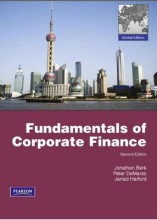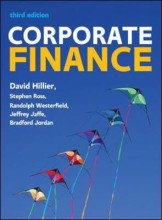Summary: Robbins
- This + 400k other summaries
- A unique study and practice tool
- Never study anything twice again
- Get the grades you hope for
- 100% sure, 100% understanding
Read the summary and the most important questions on Robbins
-
2 The evolution of Organisation Theory
This is a preview. There are 32 more flashcards available for chapter 2
Show more cards here -
Name two dimensions of looking at organization theory
1. Organization as system: distinction between open and closed systems
2. Organizational structure:
- rational perspective: structure is a vehicle for effectively achieving objectives
- social perspective: structure is the result of conflicting interests of the organization's constituents, who want power and control -
When did the concept of a 'manager' rise and as what was it seen before that?
It developed when modern industrial firms started to rise. Prior to this, managerial tasks were seen as a by-product of certain positions. -
What were the 2 greatest problems of initial firms, that followed the template of the army and church?
1. Maintain discipline among the workforce
2. Determine whether they were making a profit or a loss (accounting) -
What was the first systematic analysis of modern organizational life, that took place in the 18th century?
The division of labor: functional specialization, since a job is broken down into simple and repetitive tasks. Adam Smith was the first to conclude that it can bring significant effeciencies. -
What emerged from mass production? Name its characteristics
The modern industrial structure. Departments were formed, timetables and schedules were introduced, clear lines of authority and areas of responsibility. -
What do the classical theorists (1900-1930) suggest?
It suggests that the ideal organization is a closed system, and it can be seen as being rational with predictable outcomes. They treated organization as having machine-like properties. Their main aim was to improve the productive efficiency of organizations, as in that time, because of mass production, there was a strong desire to reduce costs in order to expand the market. -
What are the 4 principles of scientific management of Frederick Taylor/Taylorism and what is their objective?
1. Using scientific determination to determine each element of a job
2. Scientific selection and training of workers
3. Cooperation of management and workers
4. More equal division of responsibility between managers and workers, with managers planning and supervising and workers doing the execution
The objective is to increase productivity by systemizing and standardizing jobs -
What was the greatest criticism on scientific management of Frederick Taylor/Taylorism (the shift in power from the worker to the manager)?
The deskilling of work took away much of the workers' pride in their jobs. The independence of workers decreased, management gained more power and there was a shift towards centralization. -
What is the difference between the classic theories between 1900-1930: Henri Fayol's principles of organization and Taylorism?
Henri Fayol's principles of organization focused on all levels of management, while Taylorism only focused on the lowest level in the organization (floor-level management) -
What are the characteristics of Max Weber's bureaucracy (1900-1930), and what was the objective?
Characteristics: division of labor, clear authority hierarchy, high formalization, detailed rules and regulations, employment decisions based on merit, career tracks for employees, distinct separation of members organizational and personal lives and impersonal relationships.
Objective: fight arbitrariness and favoritism, and make organizations fairer
- Higher grades + faster learning
- Never study anything twice
- 100% sure, 100% understanding































